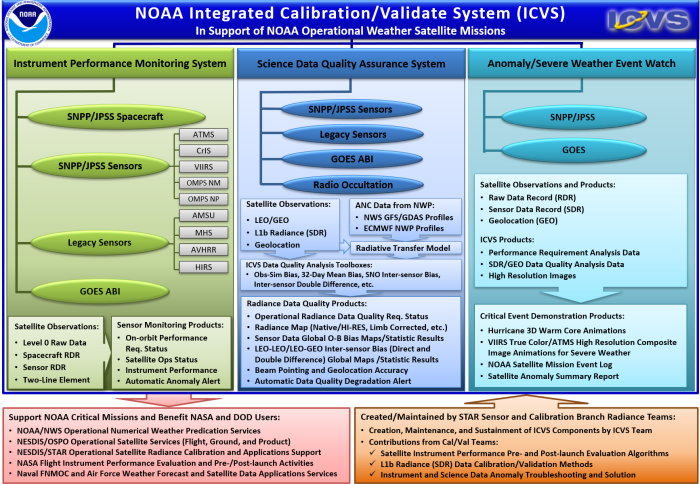STAR ICVS Long-Term Monitoring
Benefits of Integrated Calibration/Validation
- Turn instrument measurements into accurate environmental parameters.
- Ensure high-quality satellite imagery for forecasts (e.g., hurricane tracking and monitoring).
- Deliver accurate products for weather forecasts and environmental monitoring
- Ensure the integrity of the climate data records from broader satellite instruments.
ICVS Vision
Satellite observations are intercomparable and tied to international standards for weather, climate, ocean and other environmental applications.
ICVS Goals
- Provide real-time environmental satellites performance monitoring.
- Reduce the uncertainty in climate trend detection and prediction through vigorous calibration and reprocessing.
- Increase accuracy of satellite data for weather and environmental prediction models.
- Smoothly transition new calibration algorithms to operations.
- Develop common practices for calibration of Earth observation sensors.
- Achieve traceability to the International System of Units (SI)
- Optimize sensor choice and design for achieving these goals.


